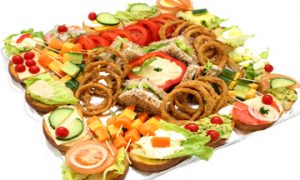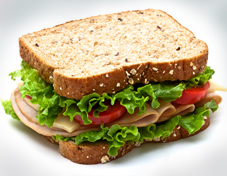More people are choosing plant-based meals, and not just for health reasons. Whether it’s full-time vegans or guests who simply want to eat lighter, vegan platters tick a lot of boxes. In many parts of South Africa, there’s a noticeable shift in how people think about food, especially when planning gatherings. It’s not only about what tastes good. It’s about how food makes you feel, how it fits into your lifestyle, and how inclusive it is. That’s why vegan platters are gaining attention—they offer variety, bold flavour, and something for nearly everyone.
South Africans are known for their love of food, and when you put together something vibrant and colourful that doesn’t rely on animal products, it stands out. It shows that you’ve considered everyone. A well-assembled platter isn’t just for vegans. It can be the highlight of the table, even at braais and birthday parties where meat might still be served elsewhere.
Catering to Diverse Dietary Needs

There’s a good chance that someone at your event avoids dairy, someone else doesn’t eat eggs, and a few are trying to cut back on meat. Vegan platters give everyone a safe and satisfying choice. They also reduce the need to create separate meals for different people.
This makes catering simpler. You don’t need to ask who’s vegetarian or gluten-sensitive or lactose-intolerant. You just put out something that avoids all of that, and it’s still packed with flavour. That kind of thoughtfulness gets noticed. It makes guests feel welcome and comfortable without calling attention to what they can’t eat.
The Visual Impact of Colourful, Plant-Based Foods
One of the best things about vegan food is how it looks. Fruits, vegetables, nuts, seeds, dips—they come in natural shades that are rich and eye-catching. A good platter catches the eye before anyone even takes a bite. Red peppers, yellow mango, purple beetroot hummus, green grapes, black olives, orange carrots—it’s like painting with food.
When you build a platter using fresh ingredients, the colours do most of the work. You don’t need to add anything artificial. And because everything is whole and unprocessed, you’re presenting real food in a way that draws people in. You’re not just feeding them—you’re impressing them.
Planning Your Vegan Platter
Considering the Event Type and Guest Preferences
Start with the event. A casual picnic? A birthday party? A formal launch? Each one needs a different style of platter. A family lunch might suit a relaxed, rustic board with lots of crunchy veggies and laid-back dips. A more formal setting might call for neatly arranged canapés, small serving bowls, or elegant tongs.
Think about how people will be eating. Will they be seated or standing? Is this the main meal or just something to snack on while people mingle? And what about the time of day? A mid-morning gathering might call for lighter bites, while evening events might lean more towards hearty components.
Then consider who’s coming. A younger crowd might go for bolder flavours, spicy spreads, or quirky additions like popcorn or veggie chips. Older guests might prefer traditional items like olives, nuts, and bread.
Balancing Flavours and Textures
A good vegan platter isn’t just a pile of fruit and crackers. The best ones include sweet, salty, sour, and savoury flavours. They’ve got crunch, creaminess, chewiness, and softness. That balance keeps things interesting.
Think of pairing sweet grapes with salty roasted almonds. Crunchy celery with smooth peanut butter. Spicy hummus with soft flatbread. The idea is to keep each bite exciting and to give guests enough variety that they keep coming back for more.
Incorporating Seasonal and Local Produce
Using ingredients that are in season means better taste and better prices. It also means less transport and fresher food. South Africa has an abundance of local produce, from juicy summer watermelon to winter root vegetables.
Plan your platter around what’s in season, and it’ll look and taste better. It also shows effort and care. People notice when food feels fresh and thoughtfully selected.
Building a Balanced Vegan Platter
Protein Sources: Legumes, Nuts, and Seeds
Protein keeps guests full and satisfied. Without meat, you can bring it in through chickpeas, lentil spreads, cashew cheese, almond butter, roasted seeds, or nut-based dips. Roasted chickpeas with spice blends add crunch. Nut cheeses give the richness some people expect from dairy.
These ingredients are more than fillers. They provide the backbone of the platter. Add variety by using a mix of raw and roasted, whole and ground. Sprinkle seeds like pumpkin or sunflower across the board for colour and texture.
Fresh Fruits and Vegetables: Adding Colour and Crunch
These are the showstoppers. Cucumber slices, radishes, baby carrots, cherry tomatoes, sugar snap peas, grapes, strawberries, apple slices, mango chunks—all of them offer a mix of textures and bright colours.
Cut them into shapes that are easy to grab and eat. You don’t want anything too drippy or hard to hold. Think skewers with grape and pineapple. Sticks of carrot or cucumber. Quartered figs or peeled oranges.
Mix soft with crunchy. Sweet with bitter. Juicy with dry. It’s the balance that makes it work.
Whole Grains and Breads: Providing Substance
This section gives the platter weight. Think mini pita breads, seeded crackers, corn cakes, brown bread cut into triangles, rice paper rolls, or rye crispbreads. You can also include rolled oats bars or mini wraps cut into pinwheels.
Try not to lean too heavily on refined carbs. Seeded crackers with a smear of hummus can be just as satisfying as white bread with a spread. And they bring in more nutrients, fibre, and texture.
Dips and Spreads: Enhancing Flavour Profiles
Dips pull the whole platter together. They’re the bridge between fresh veg and the rest of the board. A good spread adds moisture, richness, and flavour. Think hummus (plain or flavoured), baba ganoush, beetroot purée, lentil pâté, or guacamole.
Don’t overcomplicate things. One or two bold dips are often better than five average ones. Make sure they’re easy to scoop and that the serving spoons or knives are practical. No one wants to double-dip or fumble.
Sweet Treats: Concluding with a Delightful Finish
Most platters don’t need full desserts, but a few sweet additions can round off the experience. Think dried fruit like dates or apricots. Dark chocolate pieces. Coconut bites. Peanut butter energy balls.
Keep these small and neat. You’re not serving pudding—you’re adding just enough sweetness to complement everything else. These also help cater for guests with a sweet tooth who might want a little something after their savoury nibbles.
Presentation and Arrangement Tips
Choosing the Right Serving Platters and Utensils
Go for big boards, wooden trays, slate slabs, or even baking sheets for casual events. Small bowls can hold dips, olives, and nuts. Use ramekins or shot glasses for sauces. The key is keeping everything accessible.
Think about hygiene and ease of use. If guests will be serving themselves, provide tongs or spoons. If it’s a more styled platter, arrange it in a way that looks full but neat. Leave space between wet and dry items.
Arranging Foods for Visual Appeal
Start with the biggest items—your bowls of dip, loaves of bread, or clusters of grapes. Then work outwards. Layer things in groups, not random piles. Place similar colours apart so the whole board looks balanced.
Don’t just throw everything down. Think about how the colours flow. Avoid placing all the beige items together. Break it up with greens, reds, purples, and oranges. And don’t forget height. Stack some things higher—like breadsticks or fruit skewers—while letting other items sit flat.
Garnishing and Final Touches
Fresh herbs, edible flowers, and crushed nuts are quick wins. A sprinkle of sesame seeds or a dusting of smoked paprika can change the look and taste of a whole dip.
Lemon wedges or lime slices can also be useful—both for visual appeal and for guests who want to add a squeeze to their snack. Just don’t overdo the garnishes. Keep them fresh, edible, and simple.
Addressing Common Challenges
Ensuring Nutritional Balance
A lot of people assume vegan food is healthy by default, but balance still matters. You want to avoid platters that are just crackers and fruit. You need protein, fat, carbs, and fibre. Include a bit of everything so no one leaves hungry.
Look at your platter like a meal. Does it have enough variety? Would someone feel full after eating from it? If not, go back and add more protein and more substance.
Managing Food Allergies and Intolerances
Always check your ingredients. Some guests might have nut or gluten allergies. Others might avoid soy or sesame. Label items if you can or keep common allergens in separate sections of the board.
It’s a small detail, but one that shows attention and care. It also helps avoid awkward questions or uncomfortable moments during the event.
Keeping Foods Fresh During Events
If it’s a warm day or the event is outdoors, keep dips cool with an ice pack underneath. Cut fruits closer to serving time so they don’t brown. Use lemon juice to stop apple slices from going soft.
Don’t leave food out for hours if it’s hot. Refill smaller platters more often instead of putting everything out at once. This keeps it all looking fresh and prevents waste.
Embracing Creativity in Vegan Entertaining
This isn’t about ticking boxes or being trendy. It’s about offering food that tastes good, looks good, and makes people feel included. Vegan platters allow you to be creative with colours, flavours, and ingredients.
You’re not trying to copy meat platters or impress hardcore vegans. You’re just giving people something real, fresh, and exciting to eat. It’s that simple.
Encouraging Guests to Explore Plant-Based Options
When guests see how much care you’ve put into your platter, they’re more likely to try something new. They might come for the olives but stay for the carrot hummus. They might think they’re just snacking but end up full and satisfied.




Leave a Reply